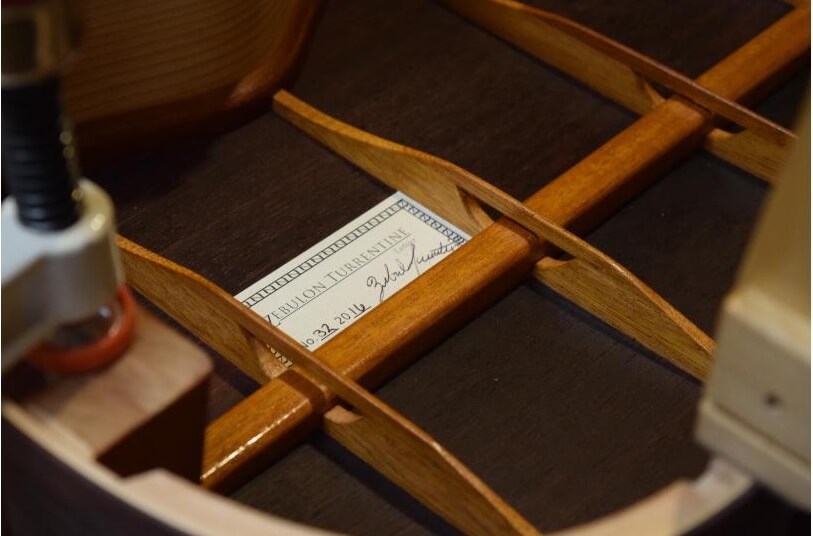About Guitar Design
 Once I received an email from a friend of his new idea for a top bracing pattern with the question, “Do you think that this design will make a good sounding guitar?” It was actually a creative idea and it certainly didn't fail to peak my curiosity, but it was the question itself that stuck with me and deserves an honest answer. I consider this article posting a continual effort in addressing the merits of design.
Once I received an email from a friend of his new idea for a top bracing pattern with the question, “Do you think that this design will make a good sounding guitar?” It was actually a creative idea and it certainly didn't fail to peak my curiosity, but it was the question itself that stuck with me and deserves an honest answer. I consider this article posting a continual effort in addressing the merits of design.
Dismissing the subjective conversation over what a “good” sound actually is, I think my friend's question points to the overvaluation that many guitar customers and luthiers place on design.
What design does and does not do...
A guitar’s design is the big picture direction that a luthier takes with an instrument.
Of course design plays a very important role, but it is very difficult, if not impossible to draw any conclusion about the specific effects that any one design may have on the sound of the final product. We luthiers do it all the time to sell our work, but at home and in the shop, we are scratching our heads. A recent example includes the double-top design. There is a younger generation of guitar player that has basically grown up with this design option in the marketplace and more and more often they are equating “loud” with this design. If they hear a guitar they like, that projects very well, they ask, “Is that a double-top?”
On the other side, there is an older generation of players who developed their technique and came of age during the reign of the Madrid school guitar. Traditionalists in every respect, they hear a guitar they like or perhaps play it and are quick to label it “traditional” when infact, the guitar might be a double-top.
I have made the same mistake many times. In the finals of one competition there was one guitar that overwhelmingly stuck out in its projection and deep resonance. While I would have guessed the guitar was a heavily framed, thin topped lattice, it ended up that the guitar was a Fleta copy.
Design doesn’t make a guitar sound “great”. The design is a mere starting place. When we develop a new design we string it up, take note of its weakness, and gradually through a process of trial and error, we work to make that instrument great.
So our most valuable design work is in the process we use to adjust an instrument until it fulfills our vision.
